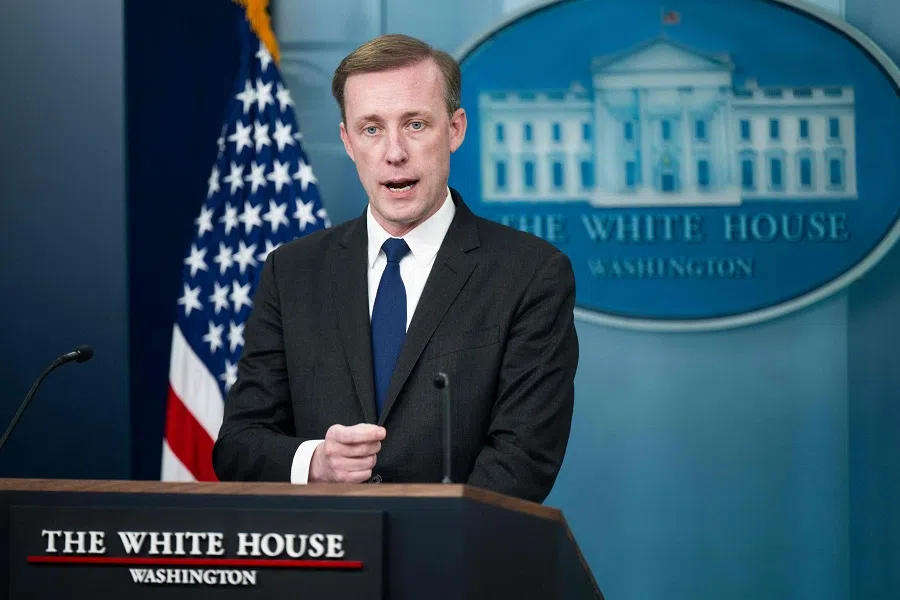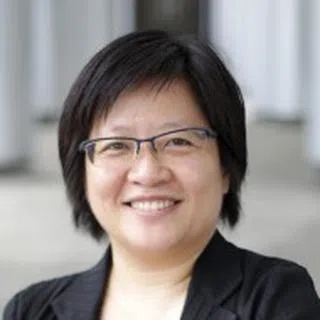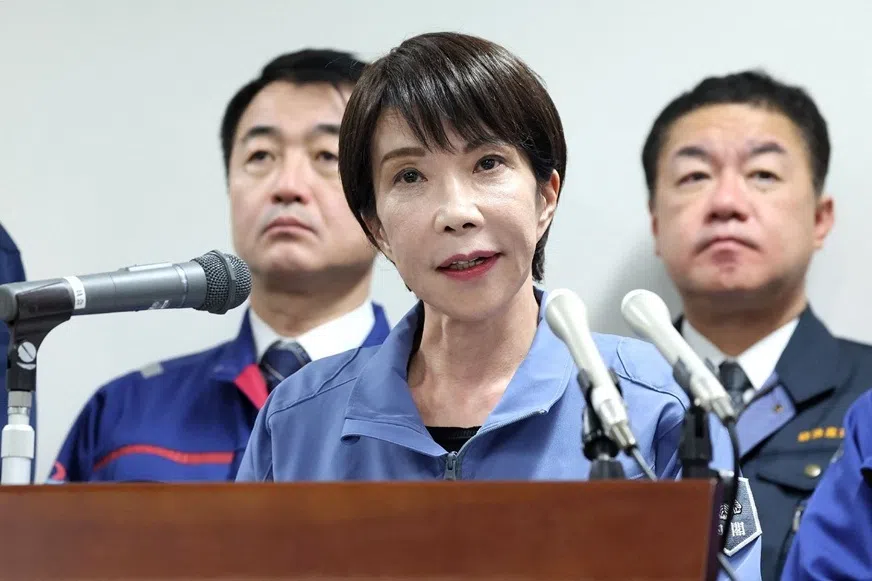The long-term impact of South Korea’s short-lived martial law
While the martial law crisis in South Korea has dissipated, its impact on South Korean President Yoon Suk-yeol’s reign, as well as on the Northeast Asia geopolitical landscape, has been deeply felt. Lianhe Zaobao associate editor Han Yong Hong takes a look at the impact on the region and South Korea-US relations.

Despite an abrupt end within six hours, the nationwide emergency martial law turmoil in South Korea that shocked the world has left people worried about the situation in Northeast Asia due to President Yoon Suk-yeol’s desperate decision, as well as the political turmoil that ensued.
Yoon’s failed gamble
During a live television broadcast on 3 December, Yoon declared martial law, a first by the South Korean government since the Gwangju Uprising in 1980 and since South Korea’s democratic transition in 1987.
The implementation of the martial law revokes the longstanding key democratic rights of South Korean citizens. This includes the prohibition of all political activities, public gatherings, strikes and “fake news”. All media and publications are placed under the control of the martial law command, and medical personnel in South Korea who have been on strike for more than half a year are required to return to work within 48 hours.
Anyone in violation of the martial law order can be arrested, detained and searched without a warrant and would face penalties.
According to Korean media reports, Yoon insisted on declaring martial law despite opposition from his cabinet members and even deployed special forces to block the doors of the National Assembly on the night of 3 December.
This drastic measure is directly related to his difficulties in governance. In the parliamentary elections in April this year, Yoon’s conservative party, the People Power Party, suffered a crushing defeat, with the opposition party and its alliance securing nearly two-thirds of the parliamentary seats. This highlighted Yoon’s official status as a “lame duck” and the instability of his presidency — just eight party members switching sides could lead to his impeachment. (NB: On 6 December, People Power Party leader Han Dong-hoon called for President Yoon to be suspended from his duties.)

The opposition-dominated parliament made governance extremely challenging for Yoon. Almost all his core cabinet members, including the defence minister, have been removed by the opposition, while his government’s budget and bills have been obstructed in every possible way, and scandals involving Yoon’s wife have been relentlessly pursued.
Yoon’s approval rating has also been on a continuous decline. A Gallup Korea poll released on 29 November showed his approval rating at only 19%, while his disapproval rating stands at 72%.
Yoon’s presidency is entering its final countdown due to the martial law crisis he initiated, which has also embarrassed South Korea’s ally, the US, and cast a pall over the alliance against China and Russia that the US has been actively building in Northeast Asia.
Upsetting an ally
Yoon declared martial law under the pretext of defending South Korea from the threat of “North Korean communist forces”, eliminating northern influences and maintaining constitutional order. However, this tough political gamble not only failed to lift him out of his predicament, it also placed him in an even more passive and precarious situation.
In the early hours of 4 December, 190 members of the parliament returned to the National Assembly to vote in favour of lifting the martial law order, forcing Yoon to awkwardly retract his decision. Now, polls show that over 70% of South Korean citizens support impeaching Yoon, and many analysts believe his best option now is to voluntarily resign.
Yoon’s presidency is entering its final countdown due to the martial law crisis he initiated, which has also embarrassed South Korea’s ally, the US, and cast a pall over the alliance against China and Russia that the US has been actively building in Northeast Asia.
Since Yoon came to power in 2022, the US-Japan-South Korea alliance has grown increasingly robust, with Japan and South Korea setting aside historical grievances to establish close political, economic and military ties. Conversely, the China-South Korea relationship is at a low, with no signs of recovery. Behind this is Washington’s influence and Yoon’s own pro-American stance.
Despite public opposition, Yoon’s efforts to improve Japan-South Korea relations have surpassed those of previous South Korean presidents, in line with the US’s strategic goals and interests in Northeast Asia.

In June and mid-November this year, the US, Japan and South Korea conducted two rounds of “Freedom Edge” joint multi-domain military exercises. During the APEC summit held in Peru in November, US President Joe Biden held a trilateral meeting with Yoon and Japanese Prime Minister Shigeru Ishiba, praising the trilateral cooperation in countering North Korea and Russia.
The US appeared deeply angered by its ally’s unexpected announcement of martial law this week. On 4 December, US national security adviser Jake Sullivan publicly criticised Yoon for not informing the US beforehand. According to Sullivan, the US “learned about this [declaration] from the announcement on television, the same way the rest of the world did”, and it “raised alarm bells everywhere” in Washington.
Deputy Secretary of State Kurt Campbell even openly said that Yoon “badly misjudged” his decision, describing the martial law process as “deeply problematic” and “illegitimate”. The US currently has 28,500 troops stationed in South Korea to ensure its security. However, reports suggest that US Forces Korea commander Paul LaCamera was briefly unable to reach his South Korean counterparts — Washington’s shock and dissatisfaction can be imagined.
The incoming US diplomatic team is already expected to be drafting new strategic plans for US-South Korea cooperation in a post-Yoon era.
Already planning for a post-Yoon era
The martial law crisis has quickly ended under the strong resistance of opposition parties, reflecting both the vulnerabilities and resilience of South Korean democracy. However, the intensified political infighting and hostility within South Korea are likely to persist, and the damaged trust between the US and South Korea will be difficult to rebuild in the short term.
Yoon’s gamble means that by the time the next US-Japan-South Korea trilateral summit is held, South Korea may have a new leader. Even if Yoon remains president, the country’s political situation could still be unstable. The incoming US diplomatic team is already expected to be drafting new strategic plans for US-South Korea cooperation in a post-Yoon era.
Donald Trump does not prioritise rallying allies as a primary tactic against China. Therefore, even without Yoon’s crisis, the US-Japan-South Korea alliance might still loosen, and China could still face the same challenges.

If South Korea elects a liberal president with pro-China and pro-North Korea leanings, the pressure China faces from containment efforts might ease slightly. Amid China’s struggle against the strong oppression of a Trump 2.0 administration, this would be welcome news — any reduction in pressure is beneficial for China.
However, unlike Biden, Donald Trump does not prioritise rallying allies as a primary tactic against China. Therefore, even without Yoon’s crisis, the US-Japan-South Korea alliance might still loosen, and China could still face the same challenges.
Meanwhile, the ongoing instability in South Korean politics might pose a more immediate risk: allowing North Korea to think that it has an opportunity to act recklessly. North Korea remains the greatest source of instability and risk in Northeast Asia. All parties should look for and support the swift stabilisation of South Korea’s political landscape.
The world is already fraught with turmoil; Northeast Asia really does not need to become another flashpoint for military conflict.
This article was first published in Lianhe Zaobao as “韩国戒严风波牵动东北亚地缘政治格局”.



![[Big read] China’s 10 trillion RMB debt clean-up falls short](https://cassette.sphdigital.com.sg/image/thinkchina/d08cfc72b13782693c25f2fcbf886fa7673723efca260881e7086211b082e66c)

